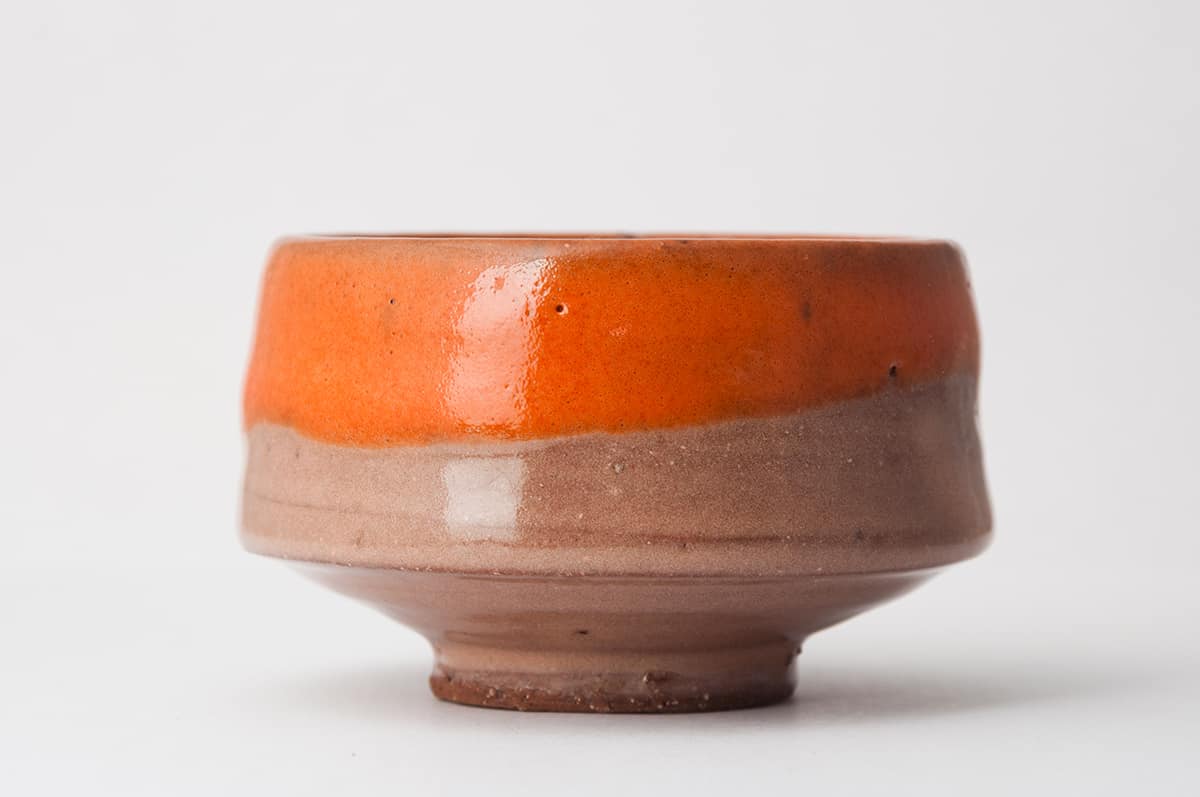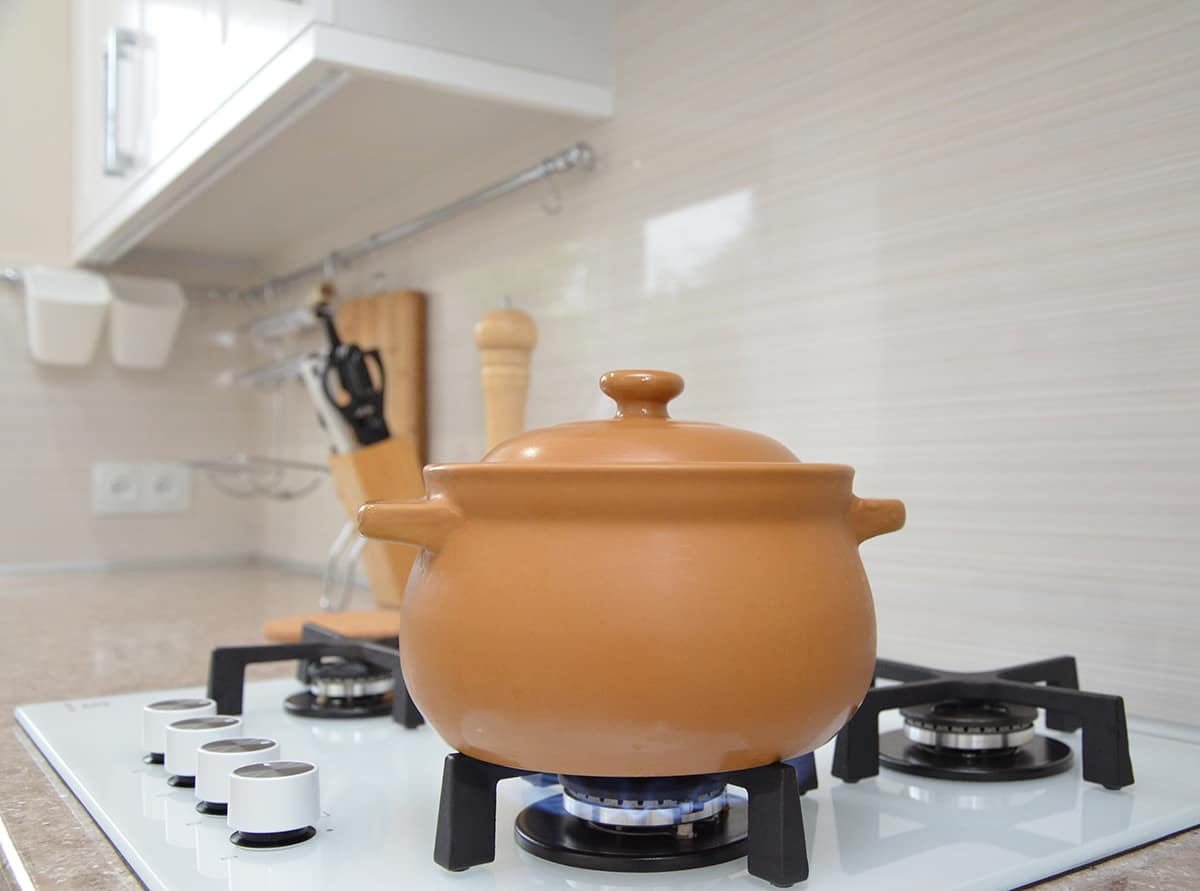Clay pots are great for a number of things, including storing faux flowers for lifting spirits. You can also find clay pots for cooking—something that has been around for around 9,000 years. But is it safe to use clay pots to cook on modern gas stoves?
Yes, it is. Clay pots can be used as a cooking vessel on gas stoves, as well as on electric stoves. It’s even safe to use in your oven or on an open flame during camping.
Today, I’ll speak about how you can safely use clay pots on a gas stove, the benefits of clay over other common cookware materials, and how to maintain clay pots.
What Is Clay Cookware?

Clay cookware has been around for ages. In fact, it predates metal cookware for thousands of years (the Mesopotamians used copper cookware roughly 6,500 years ago). Although clay has been substituted for metal and glass in the kitchen, that doesn’t mean you can’t get your hands on a handy clay pot today.
As you can imagine, clay pots are made of 100% natural materials from the belly of our planet. The clay is molded into a pot and tempered to solidify its walls. Some clay pots are finished with a glazed coating, while others remain unglazed, or only their lid is given a shiny coating.
One huge benefit of clay cookware is that there are no chemicals for your food to react with. Certain types of food will leech the chemicals from metal cookware, though this isn’t considered a major health hazard. However, if you’re conscious about what chemicals go into your system, you might want to make the change from metal cookware to clay.
Can Clay Pots Be Used on a Gas Stove?
Since clay pots have been around for thousands of years now, it’s safe to assume that our ancestors used to cook food and boil water in clay pots. However, they would do it on an open flame, while most of us don’t have access to open fire pits at home. So, is it safe to use clay pots on a gas stove?
Yes, it is. In fact, clay pots are safe to use on electric stoves (not including induction stoves), ovens, broilers, and microwaves. As long as the pot is made of flameware clay, it should be able to withstand extremely hot temperatures without cracking or shattering into a million pieces.
To be sure whether or not your clay pot is safe to use on a stove, look for a stove-safe or oven-safe label. If you’re unsure, reach out to the manufacturer. If you don’t get a response, it’s safer to assume that it’s not stove-safe and that you should look for another clay pot.
Unglazed vs. Glazed Clay Pots
Now that it’s clear we can use clay pots on gas stoves, it’s time to talk about glazed and unglazed clay pots. Apart from the lustrous finish of glazed pots, how do they differ from unglazed pots?
Unglazed

You can tell whether or not a clay pot is glazed by looking at its exterior. Unglazed pottery has a matte finish, and you’ll feel tiny grain-like bumps on its exterior.
Pottery is naturally porous, so unglazed pots with have millions of microscopic holes on their inside and out. The holes will absorb your cooking liquids but will eventually convert to steam, reducing the risk that your cooking liquid will boil over.
One major downside of unglazed pots is that they are much more susceptible to thermal shock than their glazed cousins. As such, you will need to place it on a cold stove and increase the burner’s temperature slowly.
Glazed

Glazed clay pots are those that have been coated in silica and metal oxides. When spread on the surface of a pot and heated in a kiln, the silica will fill the pot’s pores, creating a waterproof seal all around it. In addition, the glaze also adds an extra layer of heat protection, so it will heat evenly and it will withstand sudden temperature changes better than its unglazed counterparts.
However, by blocking the pores, glazed pots have a greater likelihood of boiling over. If you cover this type of pot with a lid, the steam will have nowhere to go, and your cooking liquid will eventually push its way past the lid.
Which is better?
Between unglazed and glazed clay pots, glazed pots are considered to be more stove-safe. It can withstand extreme temperature changes from room temperature to gas stove burners, and you don’t have to slowly bring it up to temperature.
There is also a third category known as semi-glazed, which are clay pots that usually come with glazed tops. However, they function similarly to unglazed pots, so they do not combine the best of both worlds, unfortunately.
How to Use a Clay Pot
Because clay cookware is susceptible to thermal shock, there are a few things you need to do before placing it on your stove or in your oven.
Soak the pot in cold water for 15 minutes.
Before placing food in the clay pot, make sure you submerge it in a basin of cold, fresh water for at least 15 minutes. Doing this will allow water to enter the pot’s pores and help you steam foods more efficiently. If your pot is glazed, you can skip this step. If your pot is semi-glazed, you should make sure to dunk the unglazed portion of the pot in cold water.
Start low and gradually increase the cooking heat
Cold clay pots will shatter when suddenly exposed to heat. So, place your room temperature pot on a stove or oven set to low heat (around 250°F) and gradually increase the temperature every 5 to 10 minutes of cooking.
Place the clay pot on a potholder when serving from the pot
Many clay pots are used as both cooking vessels and serving dishes. To prevent the scorching hot underside of the pot from damaging your table or counter, place it on top of a potholder.
You can serve the food directly from the pot, but allow it to come down to a more manageable temperature to prevent accidents during dinner.
Allow the pot to come down to room temperature before cleaning
Since clay pots can shatter due to sudden changes in temperature, you should make sure to empty the pot and allow it to come down to room temp before soaking it in water. Even soaking a hot clay pot in hot water can be disastrous.
How to Season a Clay Pot
Like cast iron, clay pots need to be seasoned—i.e., coated in oil and heated. However, seasoning a clay pot will not give it a nonstick surface, but it will increase its resistance to heat and thermal shock.
Here’s how to season an unglazed clay pot:
- Soak the pot in cold water for 15 to 24 hours.
- Remove the pot from the water and scrub the entire surface with the rough side of a sponge, making sure not to apply too much pressure.
- Dry the pot with a kitchen towel or paper towel. The pot will still be damp since it is retaining a lot of the soaking water, but that’s normal.
- Pour cooking oil into the clay pot and use your hands to massage the oil all over the pot’s surface.
- Place the pot in the center of a cold oven.
- Turn your oven on and set the temperature to 400°F.
- Bake the clay pot for 20 minutes.
- After 20 minutes, leave the pot in the oven and let it come down to room temperature.
A properly seasoned clay pot will not absorb any more moisture at room temp. To be certain that you successfully seasoned your clay pot, pour 1 cup of water into the pot and take note of the position of the waterline. If the waterline has dropped after 1 hour, you will need to redo the seasoning process.






